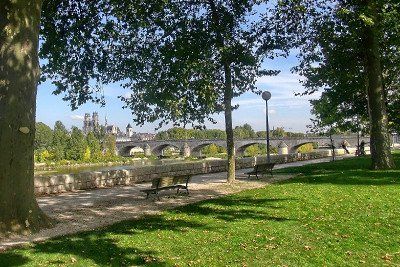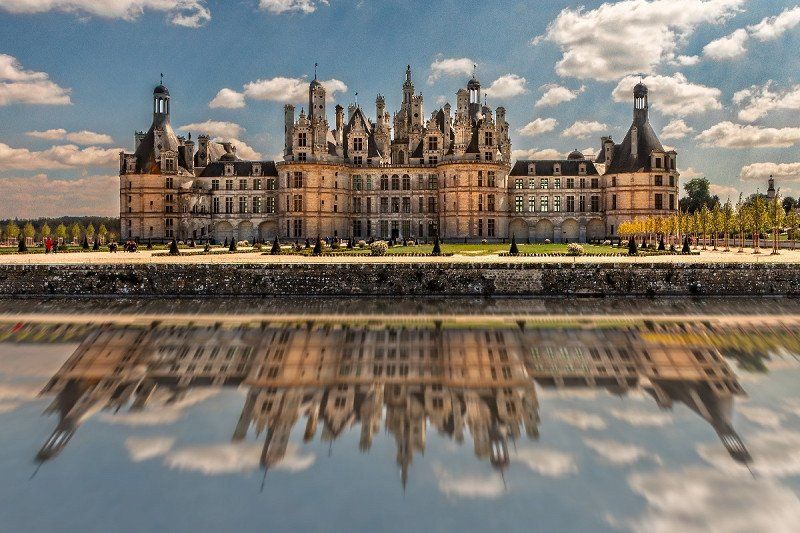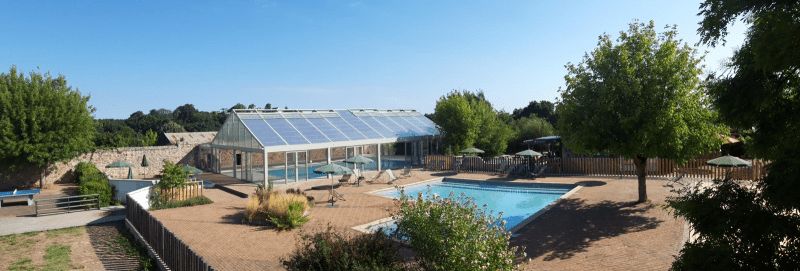The Loire Valley is one of France’s most popular holiday regions. This is because the “Val de Loire” not only offers its visitor beautiful scenery but also a myriad of cultural treasures just waiting to be explored. And this is not a surprise when you remember that the Loire Valley is considered to the birth place of the French Renaissance. The legacy of this golden age is reflected today in the multitude of magnificent palaces and gardens found along the banks of the Loire. The Loire Valley also offers a number of campsites and pitches, making it perfect for visiting with a caravan or a motorhome tour. Here, Freeontour presents you with a few basic facts about the Loire Valley:

The Loire Valley officially begins at Orléans. This is one of the oldest cities in France, and you should definitely plan in a stop here. Photo: Pixabay
Where is the Loire Valley?
With 1,012 km, the Loire is the longest river in France, stretching from its source in the Massif Central to St. Nazaire, where it flows into the Atlantic Ocean. The Loire Valley is in central France, extending over 280 km through the regions Pays de la Loire and Centre-Val do Loire. The total Loire Valley area covers around 800 km², but the majority of the places of interest lie on the banks of the river between Orléans and Nantes, on a route covering about 335 km, making it ideal for exploring in stages with motorhome or caravan. For example, about halfway along, between Tours and Angers, there is the Loire-Anjou-Touraine nature reserve, which is perfect for a break.

The Loire-Anjou-Touraine nature reserve begins at Tours. Photo: Pixabay
When is the best time to embark on a camping holiday in the Loire Valley?
The Loire Valley is known for its mild climate, reflected in the luscious green river landscape and the reason the area is also known as “The garden of France”. Vineyards cover the rolling hills and in some parts, the countryside along the river remains wild and untamed, with small sandbanks hidden here and there. Apart from the winter months, November to end of February, during which time you can expect plenty of rain, the Loire Valley is perfect for exploring all year round. In spring the temperatures can reach a comfortable 20° C, and even in summer the climate remains pleasantly warm and not too hot, thanks to the proximity of the river and the surrounding forests. The Loire Valley is a popular destination in autumn, when the trees are taking on their autumn colours but you can still enjoy up to 8 hours of sunshine per day, in October you may even be lucky enough to have the thermometer nudge 20 degrees. Therefore: The Loire Valley is worth visiting at (almost) any time of year! However, you should avoid the summer months if you want to avoid the rush - spring and autumn are somewhat quieter.
South of Tours is the moated Château d’Azay-le-Rideau, but if you take the motorway you’ll miss this little gem. Photo: Pixabay
How suitable is the Loire Valley for travelling with a motorhome or caravan?
The Loire Valley is an ideal camping holiday destination. On the one hand, the most spectacular places of interest and cultural highlights in the Loire Valley are in easy reach of one another along the 335 km route between Orléans and Nantes. On the other hand, there is a number of well-equipped campsites in the Loire Valley. And another advantage: You can, and are even encouraged to, use the country roads running along the Loire. This not only saves you paying the tolls on the motorways, but you can also enjoy the amazing scenery. The motto here is clear: The journey is the reward. The roads along the Loire pass châteaux, gardens and vineyards, and there are countless opportunities for unscheduled stops at tourist attractions. Why not simply follow the signposts leading to smaller, unknown landmarks? These often turn out to be real treasures! Many of the Loire châteaux, which are open to the public, also offer relatively well-kept carparks, so that visiting them with a motorhome or caravan is no problem, and overnighting is even allowed on some of them.
The Loire is perfect for a kayak tour, or relaxing with a fishing rod. Photo: Pixabay
What is there to do and discover in the Loire Valley?
The list of attractions in the Loire Valley seems almost endless. If nothing else, there are around 400 châteaux presiding over the river valley and its beautiful landscape. The sheer number of castles is not coincidental: In the Hundred Years’ War, which actually lasted somewhat longer (from 1327 to 1453), the Loire Valley in part formed the natural border between the French-held and English-held areas of France. During this period, the Kings of France also had to leave their capital city Paris, which had fallen into English hands, and they moved their residency to be close to the Loire. As a result, numerous castles and fortresses sprung up in this area, and these later became the bases for magnificent Renaissance châteaux. Even after the end of the Hundred Years’ War, the Val de Loire remained the political heart of France up to the year 1528. This, and no doubt the incredible countryside, drew many of the French nobility into the Loire Valley in the 15th and 16th centuries.
It is easy to see that Château Amboise was originally a fortress overlooking the Loire. Photo: Pixabay

Wine and culinary treats in the Loire Valley
If you enjoy wine, then naturally you need to include the one or other detour into the vineyards as part of your camping holiday in the Loire Valley. Here there are various museums, wine cellars and “Maison de Vins” (“wine houses”) in which the vintners personally invite you to try their wares. And they are only too happy to tell you everything about the respective grape variety, the producing region and the peculiarities of the wines in the Val de Loire over a glass or two. The numerous wine festivals are also excellent opportunities to get to know the land and its folk while enjoying their handiwork. And so you know what to look out for: Sancerre, Saumur, Cabernet-Sauvignon, Chinon, Muscadet, Layon and Vouvray are among the most famous Loire Valley wines.

Goat’s cheese in a variety of variations is served in the Loire Valley. Photo: Pixabay















































